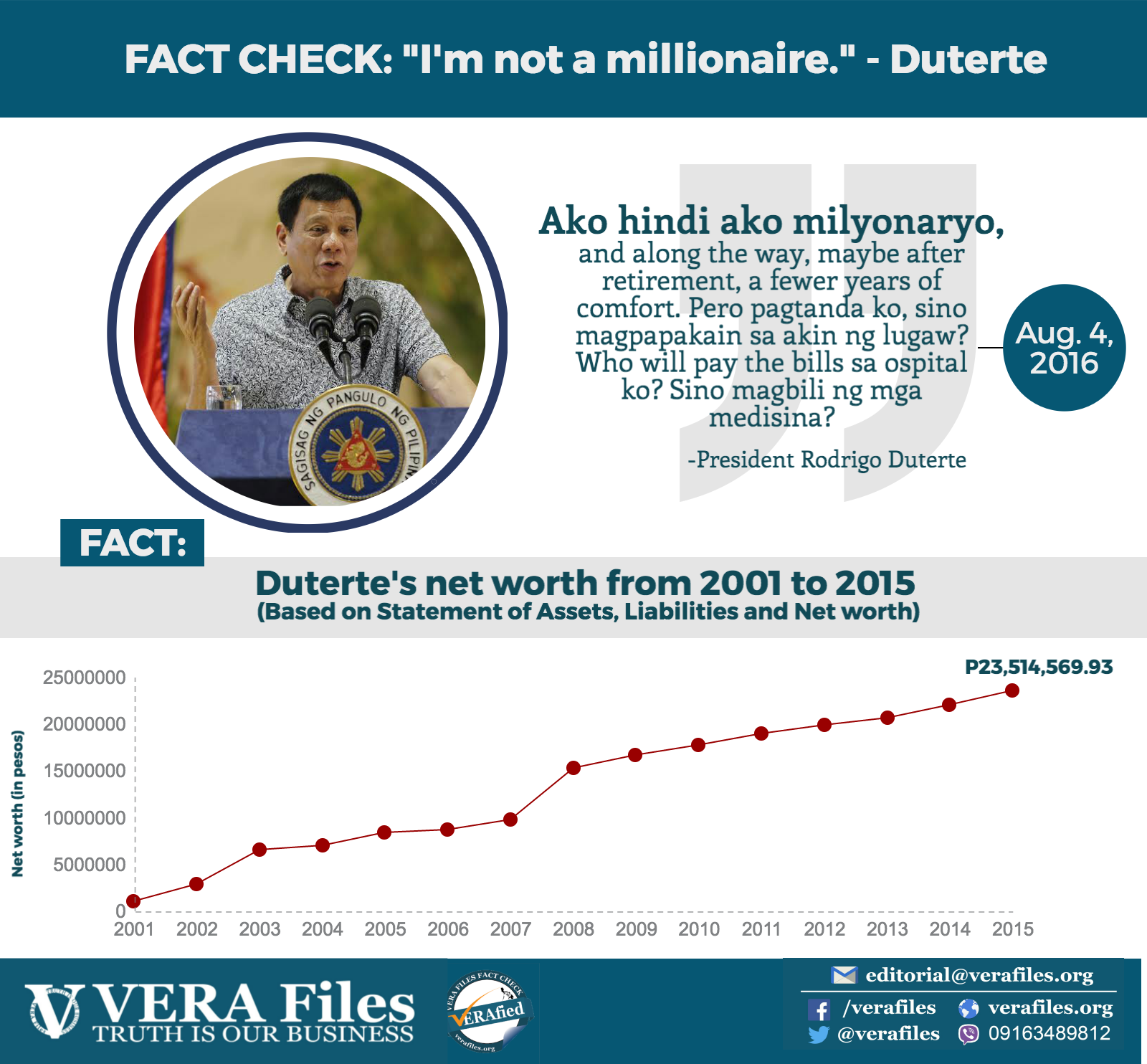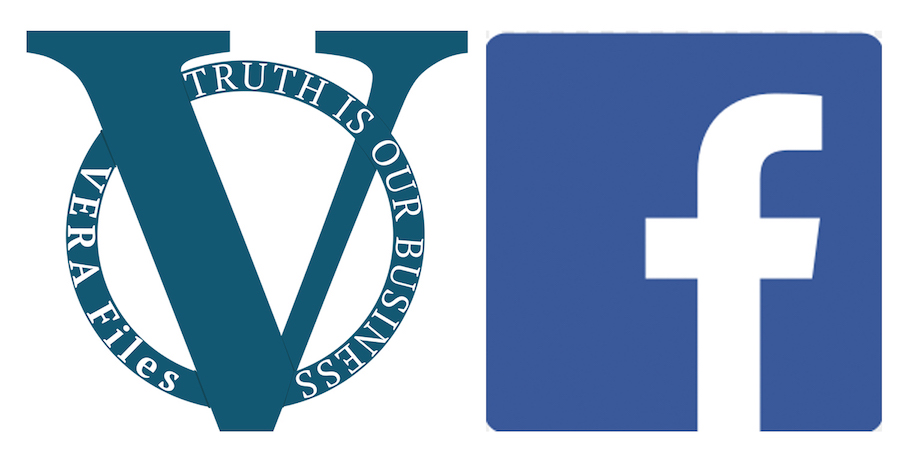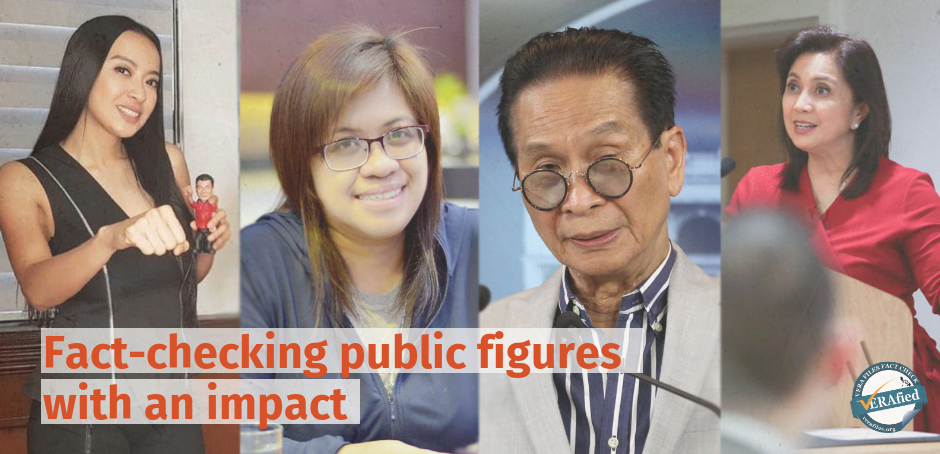Are Filipinos naturally bad at mathematics? Are the Chinese naturally good at it?
To both questions President Rodrigo Duterte says yes.
His explanation: Excellence in math has something to do with language.
The Chinese have to memorize thousands of Chinese characters, while Filipinos have ABCs, the president says.
If Filipinos are bad at math, should we stick with simple arithmetic, and get rid of the ostensibly difficult math like algebra, calculus, and trigonometry in tertiary education?
To this question, Duterte says yes, too.
STATEMENT
On Sunday, at the PICC Grounds in Pasay City, during the 35th Anniversary of the Partido Demokratiko Pilipino (PDP)-Laban, Duterte said:
“Filipinos are not adept sa Mathematics. It’s because ganon tayo lumaki. Kagaya ng Chinese, dinidikdik nila. You must remember that the Chinese dialect or language has almost 3,000 plus characters. Minemorize ‘yun nila. Itong atin kay A, B, C, D… Okay na ‘yan [laughter].”
(Source: Speech of President Rodrigo Duterte during the 35th Anniversary of the PDP-Laban, PICC Grounds, Pasay City, March 12, 2017, watch from 3:55 to 4:19)
The president also added, possibly in jest:
“I was in kanina sa Baguio, graduation ng Class Salaknib. At usap-usapan namin doon sa mga heneral kasi itong mahirap na mga subjects sa PMA. You have to be a technical guy. Foremost is you have the mastery sa Mathematics. Sabi ko, ‘Pwede ba natin tanggalin itong Calculus pati itong iba sa college?’ Wala talaga akong naalala [laughter].”
(Watch from 1:45 to 2:24)
FACT
Is Duterte correct in saying language plays a role in being good at mathematics?
Academics have studied this link. Duterte, however, made the wrong connection: The ease or difficulty in math has less to do with ABCs or Chinese characters than with differences in words or numbers.
In 2009, Karen C. Fuson of Northwestern University and Yeping Li of Texas A&M University published a paper where they observe:
“The English teen number words (eleven, twelve, thirteen, fourteen, fifteen, sixteen, seventeen, eighteen, nineteen) do not show their quantitative meanings of 11, 12, 13, …, 19 as one ten and some ones (11 = 10 + 1, 12 = 10 + 2, etc). In contrast, the regular Chinese words clearly name the tens in these teen words; these words in their English translation are ten one, ten two, ten three, …, ten nine. In English this tens-structure is either not present (e.g., eleven, twelve), has the reference to ten changed phonetically (teen instead of ten) and is also reversed in order from the numerals (e.g., 14 has the 4 second but fourteen has the four first), and/or has the ones word phonetically changed (thirteen and fifteen instead of threeteen and fiveteen).”
Source: Fuson, KC & Yeping, L 2009, ‘Cross-cultural issues in linguistic, visual-quantitative and written-numeric supports for mathematical thinking,’ ZDM Mathematics Education, vol. 41, no. 6, pp. 793-808
This linguistic difference, they write, “makes it more difficult for English-speaking children to understand that teen numbers are composed of a ten and some ones.”
“It also makes it more difficult to learn the advanced make-a-ten methods of single-digit addition and subtraction that are taught to first graders in China and other East Asian countries and that depend on this understanding,” they add.
Duterte also made a mistake in saying the Chinese language “has almost 3,000-plus characters.”
The total number is much larger, with some Chinese dictionaries recording as many as 91,000.
A paper by Wei Liang, Yuming Shi and Qiuling Huang, who are affiliated with the mathematics departments of the Henan Polytechnic University, the Shandong University Jinan, and the Shandong University of Finance and Economics Jinan respectively, notes:
“The number of characters is gradually increasing. How many characters were there in different periods? According to statistics, the number of Oracle discovered so far is about 4,500. Qin Shi Huang (259 BC–210 BC) unified the six countries and their cultures, and pushed the rapid development of characters. In the Han Dynasty (206 BC–220), the number of characters was significantly increased. ‘Shuo Wen Jie Zi’ is the earliest Chinese dictionary, which contains 9,353 characters. In the Three Kingdoms period (220–280), ‘Sheng Lei,’ written by Deng Li, includes 11,520 characters, and ‘Guang Ya’ contains 18,151 characters. In the Southern–Northern Dynasties (420–589), ‘Yu Pian’ contains 22,726 characters. In the Song Dynasty (960–1279), ‘Guang Yun’ contains 26,194 characters, and ‘Lei Pian’ contains 33,190 characters [25]. ‘Zheng Zi Tong,’ written by Zilie Zhang, contains 33,440 characters in the Ming Dynasty (1368–1644). There are 87,019 characters in ‘Kangxi Dictionary,’ written by Yushu Zhang, in the Qing Dynasty (1644–1911). In Beijing Guoan Consulting Equipment Company, the number of characters that have been identified by experts is 91,251, which consists of the most comprehensive characters. New words are continuously generated in the existing characters. For example, 15,400 new words have been created since the People’s Republic of China was established, and they are included in ‘Contemporary Chinese New Words Dictionary.’”
Source: Liang, W, Shi, Y &, Huang, Q 2014, ‘Modeling the Chinese language as an evolving network,’ Physica A: Statistical Mechanics and its Applications, vol. 393, pp. 268-276
Finally, Duterte is also wrong about getting rid of what could be difficult math courses in college.
This is because calculus and trigonometry are not required in all tertiary programs in the country.
Many programs in the fields of humanities, social sciences and communication don’t offer these two courses. But programs such as the sciences, math, architecture and engineering, accounting and management, economics, computer sciences and information technology do.
The Commission on Higher Education at present requires only a minimum six units of math in the General Education (GE) Curriculum covered by a 1996 order, CHED Memorandum Order 59, s 1996.
Schools, however, can exceed the six units of math as required by their programs. For example, the Bachelor of Science in Naval Architecture and Marine Engineering prescribes 26 units of math. They include college Algebra, Plane and Special Trigonometry, Advanced Algebra, Analytic Geometry, Solid Mensuration, Differential Calculus, Integral Calculus, Differential Equations, and Research and Statistics (CMO 28, s 2015).
The goal of offering math in the GE curriculum is “to give students precision in numerical expression, logical thinking and problem solving,” according to the CHED’s 1996 order.
Beginning school year 2018-2019, however, the GE curriculum will reduce the minimum number of units in math to only three in response to the introduction of Senior High School. Again, colleges and universities have the option to increase the number of math units to align them to what their programs need.
Neither calculus nor trigonometry will be offered in the new GE covered by CMO 20, s 2013. The math course in the GE program is called Mathematics in the Modern World (Matematika sa Makabagong Daigdig).
Its course description reads, “Nature of mathematics, appreciation of its practical, intellectual and aesthetic dimension, and application of mathematical tools in daily life.”
The senior high school program, which was implemented nationwide in schoolyear 2016-2017, requires two math subjects among the “core subjects”: General Mathematics, which is a combination of algebra, business math and pre-calculus, and Statistics and Probability. This means everyone enrolled in senior high has to take these subjects.
Senior high school students pursuing certain academic tracks get a bigger dose of math to prepare them for college work. The additional math subjects they have to take depends on the strand they’re in.
For example, those in the Science, Technology, Engineering and Mathematics (STEM) and in the Pre-Baccalaureate Maritime strands have to do Pre-Calculus and Basic Calculus. These are besides courses where math is heavily applied such as Physics, Chemistry and Economics.






